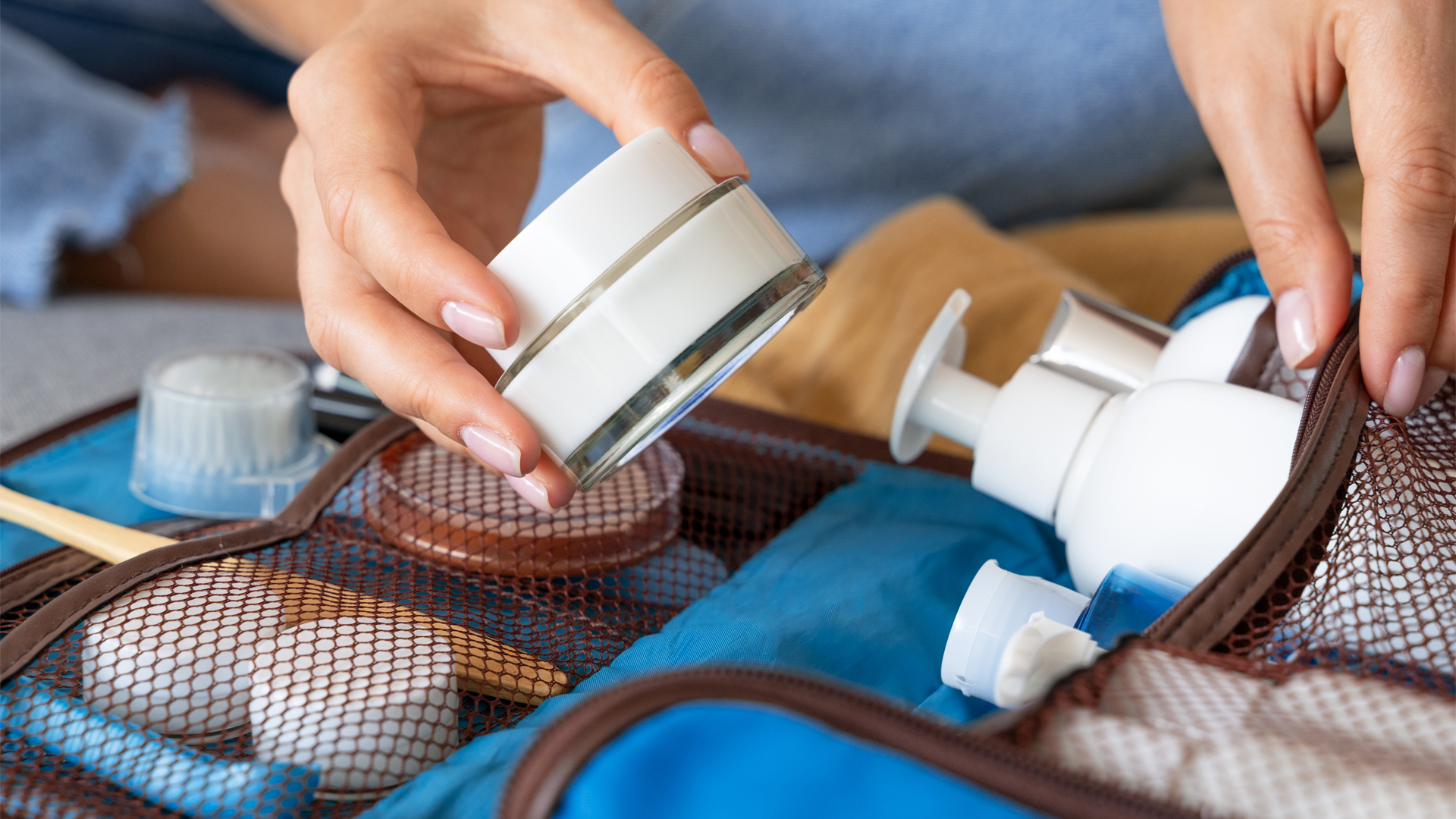
Diabetes patients rely on insulin to help maintain steady blood sugar levels. To keep your diabetes under control and maintain your health while on your trip, you must bring along enough insulin to last the entire duration of your trip. Every person with diabetes needs to know what kinds of insulin are out there and maintain a steady supply. Taking insulin on the road can be difficult and requires extensive preparation. Consequently, it is crucial to pack all of your trip essentials in advance to avoid a chaotic rush at the last minute. Follow our detailed guide to find out the right ways to travel with insulin.
How to Travel With Insulin?
When traveling, you should always have your insulin and other medications within easy reach. It’s essential to remember that different strategies for bringing insulin with you on the road may yield different results. Here are four considerations when packing insulin for a trip:
- It’s essential to plan for your trip by making a list of the locations you’ll be visiting and calculating the amount of insulin you’ll need based on the food available at each stop. With this, you can rest easy knowing that everything is neatly packed and ready to go when you get to your destination.
- Bringing your insulin cartridge with you is the most convenient method to travel with insulin. You should consider the cost of this approach before choosing if it’s the ideal one for you.
- Make use of a service that sends out insulin injections. If cost is not pressing, this is a helpful solution. Deliveries of pre-measured insulin are available from several companies and can be sent to your hotel or rental car. This may be a more expensive choice than simply bringing your own insulin, but it is also easier to manage. However, be sure to check out of the hotel after packing the insulin properly.
- Adopt a drip system that does not require injections. If money is not a significant problem, or if you want to avoid dealing with an insulin cartridge or several injections while traveling, this is still another excellent choice. Rather than injecting oneself with insulin, an injection-less drip system consists of a small container that clips onto your bra strap or waistband and releases the drug in a slow, steady stream through very fine needles.
Insulate your insulin vials to keep them from breaking. Your insulin, diabetes supplies, and food should not be kept in your checked-in bag. Put them in your carry-on bags.
Things you must have to maintain your insulin stable and cool include:
- Totes insulated for cold storage
- Portable, reusable ice packs
- Small cloth for wrapping ice packs
How to Keep Insulin Cool While You Travel?

Insulin should not be kept in checked-in luggage. Insulin’s efficacy will be compromised if it freezes in checked baggage.
- Insulin needs to be kept at the coldest part of your insulated bag
- Keep the reusable ice gel pack in the pouch. If you need to keep your insulins cool, but your bag doesn’t have a special section for ice gel packs, stack a hand towel over the ice gel packs and then set the insulins on top of the towel.
- Upon arrival, new insulin pens, cartridges, and vials should be stored in the refrigerator.
Traveling With Insulin by Car

Keep your insulin kit in the car if you need to inject insulin while on the road. Before leaving, research the insulin regulations in the host country. Keep the following in mind when going on a road trip with insulin.
- One of the most important things to remember when transporting insulin is to keep it cool and dry.
- Before leaving on a trip, talk to your doctor or pharmacist to ensure that any drugs you take are appropriate for travel and won’t interact negatively with anything you plan to take while away.
- Insulin kits should be transported safely, like the trunk of a car or a checked suitcase when flying. When traveling internationally, it is essential to be informed of the local rules regarding insulin use; some nations prohibit its use without medical supervision.
- Stay alert and watch for bicycles, automobiles, and pedestrians when crossing a street or public area during rush hour. Crossing busy streets or public places during rush hour requires extra caution to avoid potential mishaps.
- You shouldn’t keep insulin and other diabetes medications in a heated car or in the sun; instead, they should be kept in the refrigerator’s cooler.
Traveling With Insulin by Plane

When traveling, you should always keep insulin supplies in a secure, locked container or bag. When flying with insulin, it’s always a good idea to double-check with the airline to see if a doctor’s note is necessary. While insulin is not technically restricted, some airlines may require proof of medical necessity. To be clear, the rules for transporting insulin vary widely between different airlines.
You can bring up to 3 vials on several airlines if you need insulin. Some airlines may require the vial to be placed in a checked luggage container and limit passengers to carrying only one. Feel free to contact your airline directly if you need help locating the information you are looking for on their website. Some airlines such as Etihad and Emirates have a very strict policy on traveling with insulin
You can get a TSA notice card to make the screening process move more swiftly and efficiently. Patients with diabetes are exempt from the TSA’s 3.4 oz liquid rule since they need to carry medications, fast-acting carbs like juice, and gel packs required to keep insulin cool.
Continuous glucose monitors and insulin pumps might be damaged by X-rays. Only unplug either one if you have to; instead, request a visual check by hand.
To facilitate the processing of your carry-on by airport security, please follow these guidelines:
- Insulin vials should be stored in their original containers.
- Keep your medications in a different bag from your toiletries.
- Remember to bring your prescription and doctor’s note.
A current copy of your prescription and any additional papers from your doctor, such as a letter verifying the need for emergency treatment with insulin, should be carried at all times when traveling outside the United States.
Recommended Reading: Countries that require COVID-19 testing from travelers from China
Safety Precautions While Traveling With Insulin

For those with diabetes, insulin can be a lifesaver when traveling, allowing them to keep their blood sugar under control without worrying about it. Here are some suggestions for those who must travel while taking insulin:
- Have enough supplies on hand. Make sure you have plenty of insulin and a way to keep it cool and locked up for your journey. You should also include backup supplies such as needles, syringes, and cartridges in case you run out.
- Packing your insulin in a heavy container increases the risk of it becoming moist and spoiling. Carrying an insulin bottle will tire you faster than lifting a regular bag.
- Take only what you’ll need by packing strategically. While some people find it more convenient to store their insulin in a separate location, others like to keep everything in compact luggage. If you want to know what will work for you, the best way to figure it out is to try out several packing methods until you find one that makes you feel secure and at ease.
- To avoid any problems with your diabetes care while away from home, you should book your hotel room in advance if you plan on traveling during peak or long flights.
Special Advice | Traveling with Insulin
Here are some things to remember for a risk-free trip with insulin.
Safety While Transporting

- Remember that you should not store insulin in checked luggage for air travel since temperatures in the hold can dip below freezing, and air pressure can fluctuate. Place it in your carry-on so you’ll always have it with you. Insulin should be transported in a cool bag, coolbox, or polystyrene container. Vacuum flasks with broad mouths that have been pre-cooled are also helpful.
- Avoid storing insulin in a jar containing frozen plastic blocks.
- Do not store insulin in a backpack’s top pocket or near the exterior, which will cause the insulin to warm too quickly.
- FRIO is a manufacturer focusing on cooling items, such as insulin travel wallets. They are easily portable, activated by cold water, and do not need to be stored in the refrigerator.
- In the absence of a refrigerator, insulin should be kept in the darkest, coolest portion of the room. Cover it with a damp, cold cloth if it grows too hot.
Suggested Reading: Why Do My Feet Swell When I Travel?
Appearance of Insulin

Before injection, examine your insulin for signs of deterioration. The following could be indicative of damaged insulin:
- Cloudiness or thickness is average for soluble (precise and fast-acting) insulin.
- Insulin in suspension or cloudiness can cause clumps or lumps that won’t dissolve no matter how much you mix.
- The container, be it a bottle or vial, may appear frosted, with particles adhered to its surface. You might even see a brownish tint to it.
Ideal Temperature for Storing Insulin

- You should avoid exposing your insulin and blood glucose testing equipment to direct sunlight and temperatures above 90 degrees.
- Insulin can supposedly be stored at 25 ° C for up to 10 months, with a 5% loss in efficacy, and at 40 ° C for a few weeks.
- Insulin can be stored at room temperature for up to a month without refrigeration; however, many manufacturers do not advocate using it after that time. In hot areas, insulin may lose its efficacy if not refrigerated. Never store it next to a radiator or a fireplace.
- Light reduces insulin’s efficacy more rapidly than darkness does. Protect it from the sun by keeping it out of the light.
Efficacy of Insulin

The U-100 insulin strength is the standard worldwide; however, U-40 and U-80 are still available in some places. If you need to use a different strength of insulin because you can’t get U-100, be sure you have a suitable syringe. For Instance, the insulin dose will be drastically altered if a U-100 syringe is used with U-40/80 insulin, and vice versa if the reverse is done.
Quantity of Insulin

- Always have an ample supply of insulin on hand. Ideally, you bring along twice as much as you anticipate needing. However, you may want to stock up on supplies if your trip is expected to last several weeks.
- Dosage changes are possible and should be kept in mind. Blood sugar levels can be affected by several factors, including what you eat, how active you are, and the weather.
- Before leaving, you should inquire as to the availability of insulin in your destination. Insulin is a drug with several different names and strengths across countries. Gather the names and numbers of potential vendors in the major cities of the countries you intend to visit.
- The insulin you need can usually be shipped to your preferred pharmacy or pickup location from a supplier if it still needs to be added.
- A fresh supply of insulin may be required if your temporary residence does not have refrigeration.
Conclusion
If you are traveling with diabetes, you should bring twice as much insulin and blood testing equipment as you think you will need. While insulin doesn’t need to be kept cool, extreme heat or cold could compromise its effectiveness. Insulin needs to be packed and stored properly to ensure its viability and effectiveness. You should not keep insulin in the glove box or trunk of a car, nor should it be carried around in a backpack or other open bag.
Follow our Travel Tips section for more such guides.
How to Travel With Insulin? - FAQs
Unopened or previously opened insulin vials or cartridges can be stored at room temperature (59°F to 86°F) for up to 28 days without losing its efficacy.
As temperatures in the hold of a plane can dip below freezing and air pressure might fluctuate, insulin should never be packed there. Keep it in your carry-on at all times. Insulin should be transported in a cool bag, coolbox, or polystyrene container to maintain its integrity.
Flying with insulin does not necessitate a medical note. The TSA does not formally require any documentation to transport diabetes supplies and medications on board.
Insulin is a peptide hormone. If not stored properly, peptide hormones might break down. To avoid spoilage before their expiration date, it is preferable to keep all insulins in the refrigerator.






